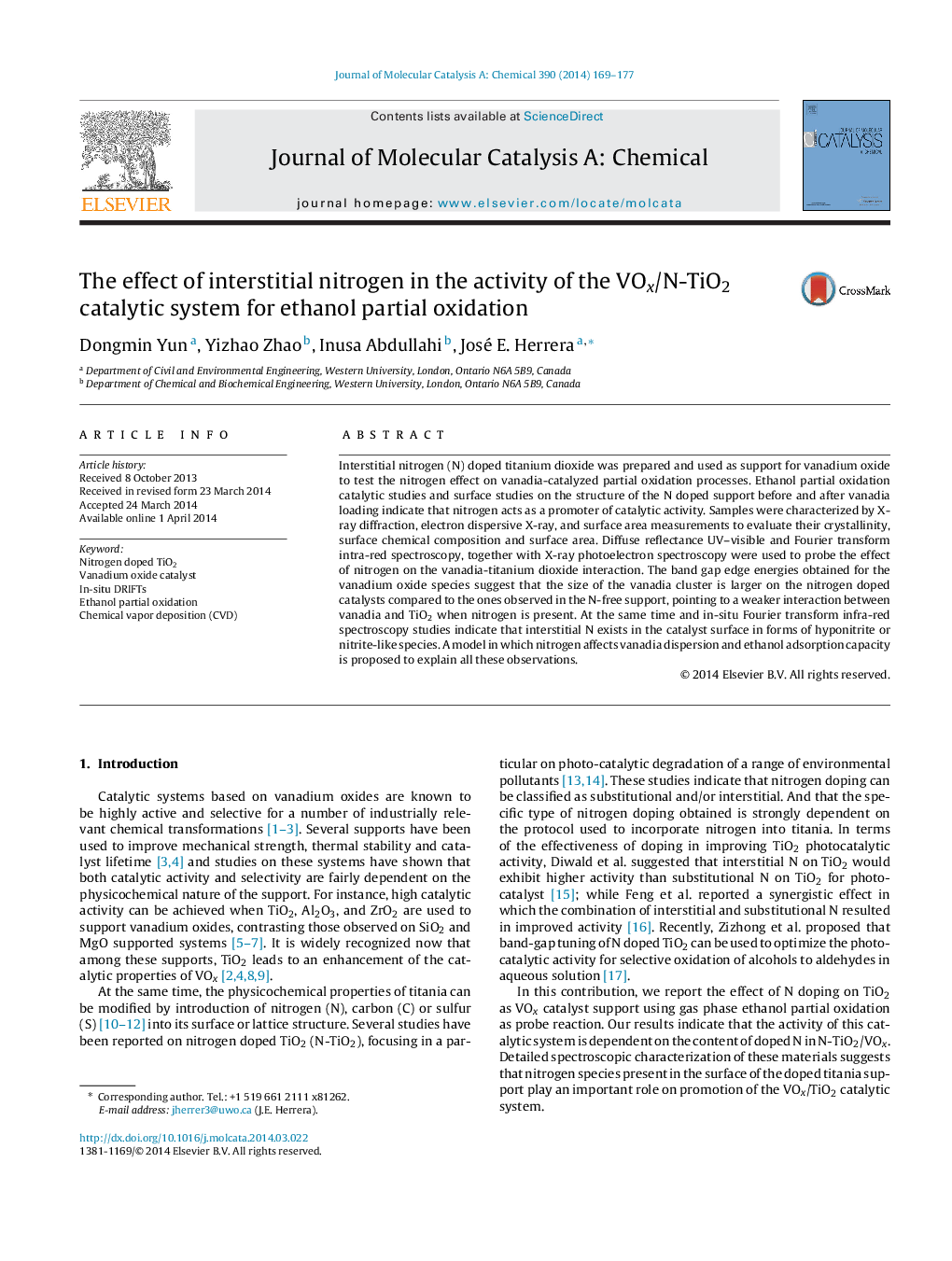| Article ID | Journal | Published Year | Pages | File Type |
|---|---|---|---|---|
| 65531 | Journal of Molecular Catalysis A: Chemical | 2014 | 9 Pages |
•Nitrogen doping promotes VOx/TiO2 activity for partial oxidation.•Nitrogen is present in the form of surface hyponitrite (N+) or nitrite(N2+) species.•Nitrogen doping affects the vanadia interaction with the TiO2 support.•Nitrogen doping affects the ability of ethanol to adsorb on the catalyst surface.
Interstitial nitrogen (N) doped titanium dioxide was prepared and used as support for vanadium oxide to test the nitrogen effect on vanadia-catalyzed partial oxidation processes. Ethanol partial oxidation catalytic studies and surface studies on the structure of the N doped support before and after vanadia loading indicate that nitrogen acts as a promoter of catalytic activity. Samples were characterized by X-ray diffraction, electron dispersive X-ray, and surface area measurements to evaluate their crystallinity, surface chemical composition and surface area. Diffuse reflectance UV–visible and Fourier transform intra-red spectroscopy, together with X-ray photoelectron spectroscopy were used to probe the effect of nitrogen on the vanadia-titanium dioxide interaction. The band gap edge energies obtained for the vanadium oxide species suggest that the size of the vanadia cluster is larger on the nitrogen doped catalysts compared to the ones observed in the N-free support, pointing to a weaker interaction between vanadia and TiO2 when nitrogen is present. At the same time and in-situ Fourier transform infra-red spectroscopy studies indicate that interstitial N exists in the catalyst surface in forms of hyponitrite or nitrite-like species. A model in which nitrogen affects vanadia dispersion and ethanol adsorption capacity is proposed to explain all these observations.
Graphical abstractFigure optionsDownload full-size imageDownload high-quality image (186 K)Download as PowerPoint slide
